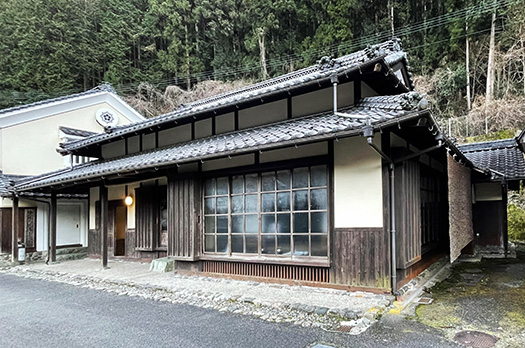
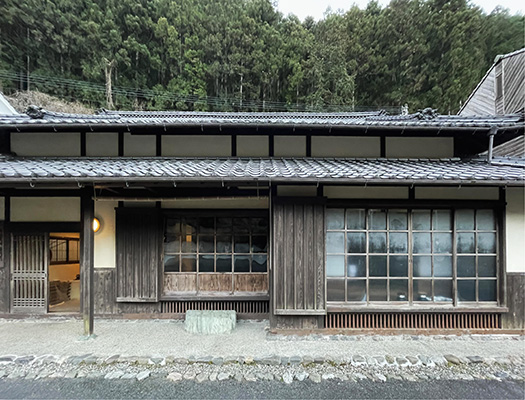
昨日紹介した正月休暇での四国行脚での1宿泊箇所・古民家であります。反応を見ていると本州地域の読者のみなさんがより激しく反応されて、北海道の方はあまり関心を示されない傾向。
たぶん住宅性能ということについての現在のユーザー心理とも連関しているように思う。北海道人の心理としては、冬の寒さについて屋外の気候状況には関心がある。吹雪がどうしたとか、大雪だとかなどの主に「交通的ストレス」の側面で捉えている。室内気候については「寒いからはやくなんとかしたい」というレベル感はあまり持っていない。
一方で温暖地域の、主にプロのみなさん(わたしのブログ読者傾向)にはお笑いネタとしての反応が強くあったように思います。「おお、このポイントを書くのか」みたいな。
一時期までは北海道のプロのみなさんは、冬の温暖地の古建築・古民家参観への恐怖感が強かったと思います。「とてもじゃないが、ムリ」みたいな反応が多かったと思います。温暖地とは名ばかりではないの?みたいな。
わたしもそうだったのですが、チョコチョコと本州地域への旅を重ねてくると、そればっかりではダメだ、やはり直接の体感共有も重要ではないか、と思えるようになって来たのです。
これもまた自分でも不思議な感覚なのですが、もちろんきのう書いたように徹底的に局所暖房の可能性をフル動員して、爆エネ動員で立ち向かうのも面白みになってくる。
郷に入らば郷にしたがう、みたいな部分でいちばんキビシイ状況を共有するという心理が徐々に強くなってくるのであります。
まぁエトランゼなので、爆エネで過ごさせてもらうのは勘弁してもらって、体験共有というものが必要なのかもと思っているのですね。その地域の「寒さ」の実体験がコミュニケーションにはある意味、欠かせないのかも知れない。そして「民俗のデザイン感覚」の根源にもこのことは関わっているのだろうと思うのです。
「冬の寒さ」というコトバの地域別の感受性の違いを知る必要性がやはりある。
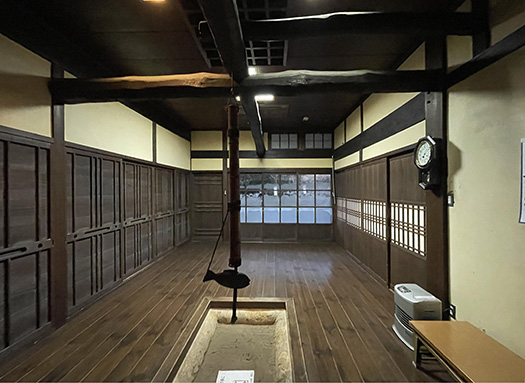
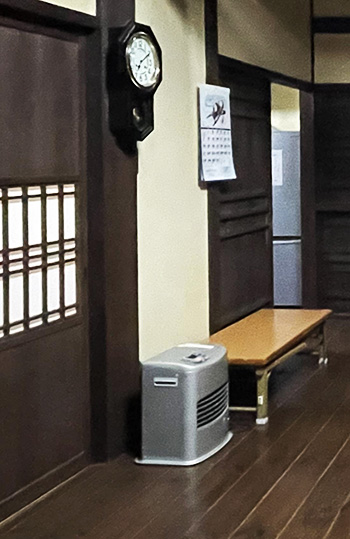
一宿一飯の恩義というコトバがあるけれど、やはりそういった各地域へのリスペクトは非常に重要な感性だと思います。すぐ上の写真は、石油ストーブが申し訳程度に置かれた囲炉裏のある居間空間ですが、こういう「部分間歇暖房」装置というものにも、おおくの人の暮らしに密接に関わっている実質があるのだと知る必要はある。
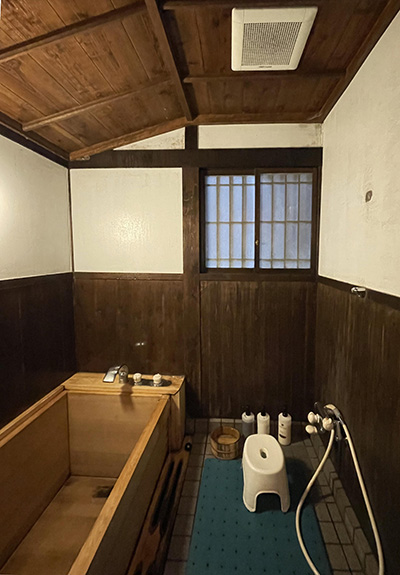
デザインはすばらしい木質感たっぷりの浴室に朝風呂として入ったのですが、たしかに一時の「無理矢理な温熱感」はある。そこから出て、カラダに熱がまだあるうちにコタツに逃げ帰る緊張感に満ちた時間の感覚などは、やはり体験してはじめてわかる部分。
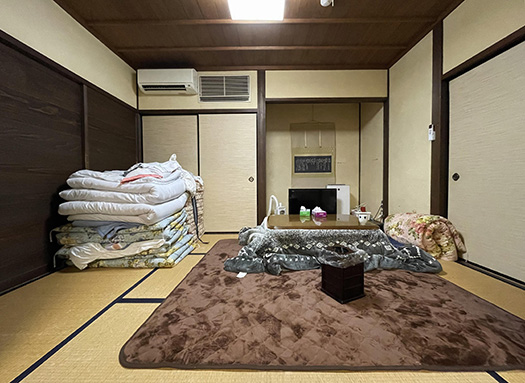
そしてきのうの写真で敷き込まれていたふとん、それもコタツに下部を突っ込ませた(笑)特殊な使い方をさせてもらった寝具たちにも朝には「戦友」感を持つ。丁寧にたたんであげたい。
愛着という暮らしに機縁する感情があるけれど、その実質にはこういったきびしさとの戦いという要素がある一定部分を占めているのでしょう。そういうきびしさがあってはじめて春のサクラの豊穣さがホンネとして実感できるのかも知れない。
English version⬇
[Design of a lodging rink and an old private house in Shikoku.
The folk traditions can be visually understood. It conveys the psychological depth of waiting for spring from the sense of enduring the cold of winter in the area. An important element for communication. ・・・・.
This is an old private house, one of the places we stayed during our New Year’s vacation in Shikoku, which we introduced yesterday. The response to this article shows that readers in the Honshu region responded more strongly to the article, while those in Hokkaido showed less interest.
I think this is probably related to the current user psychology regarding housing performance. The psychology of people in Hokkaido is that they are interested in outdoor weather conditions regarding winter coldness. They perceive it mainly in terms of “traffic stress,” such as how a blizzard or heavy snowfall is happening. As for the indoor climate, they do not have much of a level feeling of “it’s cold and I want to do something about it as soon as possible.
On the other hand, I think the response from the warmer regions, mainly professionals (my blog readers’ tendency), was strongly as a comedy story. They were like, “Oh, you’re going to write about this point?”
Until a while ago, professionals in Hokkaido had a strong sense of fear of visiting old buildings and old houses in a warm climate in winter. I think many people’s reaction was, “This is impossible, but I can’t do it. Isn’t a warm climate area just a name? I was one of them.
I was the same way, but as I made more and more trips to the Honshu region, I began to think that it was not enough to just go there, and that it was important to share firsthand experience with others.
This is also a strange feeling for me, but of course, as I wrote yesterday, it would also be interesting to confront the situation by thoroughly mobilizing the full potential of local heating systems and using explosive energy.
The psychology of sharing the most difficult situation with others is becoming stronger and stronger.
I think it is necessary to share the experience with others. The actual experience of the “coldness” of the area may be, in a sense, essential for communication. And I think this is also the root of the “folk design sense.
There is still a need to know the difference in sensitivity to the word “winter cold” by region.
There is a saying, “One night, one meal, one debt,” and I believe that such respect for each region is an extremely important sensitivity. The photo above shows a living room space with an oil stove and a hearth, but it is necessary to know that such “partial intermittent heating” devices also have substance that is closely related to the lives of many people.
I took a morning bath in a bathroom with a wonderful woody design, and it is true that there is a temporary “forced warmth” feeling. The tension-filled sensation of getting out of the bath and running back to the kotatsu while the heat is still in your body is a part of the experience that can only be understood by experiencing it firsthand.
In the morning, I feel like a “comrade-in-arms” with the futon that was laid out in yesterday’s photo, and also with the bedding that I was allowed to use in a special way (laugh), which I had to put the bottom part into the kotatsu. I want to fold them carefully.
There is a feeling of attachment, which is a fundamental part of daily life, but in reality, it is also a battle against the harshness of life. It is only with this kind of harshness that we may truly feel the richness of the cherry blossoms in spring.
Posted on 2月 28th, 2024 by 三木 奎吾
Filed under: 住宅マーケティング







コメントを投稿
「※誹謗中傷や、悪意のある書き込み、営利目的などのコメントを防ぐために、投稿された全てのコメントは一時的に保留されますのでご了承ください。」
You must be logged in to post a comment.